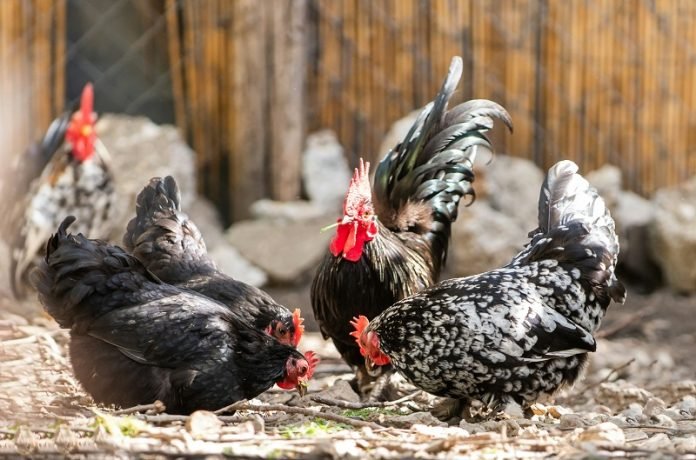
At chicken farms, there’s an invisible threat growing more dangerous by the day: antibiotic-resistant bacteria.
Scientists from the University of Nottingham have made a breakthrough in understanding how this happens, focusing on bacteria like E. coli and Salmonella enterica.
These bacteria can resist antibiotics, making them a significant concern for both animal and human health.
Antimicrobial resistance (AMR) is the ability of bacteria to withstand the drugs we use to kill them.
This resistance is becoming a global health crisis. Chicken farms and their products are potential breeding grounds for these resistant bacteria, posing a risk to animals and humans.
The main culprit behind this growing resistance is the misuse and overuse of antibiotics in livestock farming. These antibiotics are often used to prevent sickness in animals and to maintain production levels. However, this practice is contributing to a dramatic increase in AMR.
The University of Nottingham study, published in Nature Communications, offers a deeper understanding of this issue.
Researchers investigated two common bacteria found in food animals: Escherichia coli (E. coli) and Salmonella enterica. Both bacteria are known for their high drug resistance, prevalence in farms, ability to transfer to humans, and causing food poisoning.
The study was a collaborative effort involving the University’s School of Veterinary Medicine and Science, the China National Center for Food Safety Risk Assessment, New Hope Liuhe Group Ltd in China, and Nimrod Veterinary Products Limited.
Dr. Tania Dottorini, the lead researcher from the School of Veterinary Medicine and Science at the University of Nottingham, explained their findings. The study discovered that different bacteria living in the same environment, like the chicken gut, can share genetic material that carries antibiotic resistance. This sharing means that bacteria can evolve together, developing similar ways to resist antibiotics.
The team analyzed 661 isolates of E. coli and Salmonella bacteria from chickens and their surroundings in 10 Chinese chicken farms and four slaughterhouses over two and a half years. They used advanced DNA sequencing and machine learning to analyze the data.
This research is unique because it characterizes the genetic content of two bacterial species on such a large scale, using samples from the same animals and in real-life settings. The main discovery was that E. coli and Salmonella enterica in the chicken gut, compared to those in isolation, shared more genetic material related to antibiotic resistance. They also had similar resistance mechanisms and seemed to have evolved together more strongly.
Dr. Dottorini highlights the complexity of AMR in livestock farming. It involves many interactions between bacteria, animals, and humans across different environments. She emphasizes the importance of using advanced technologies like data mining and machine learning to understand these interactions, especially in environments where bacteria can develop resistance together.
The study also shows that focusing on just one bacterial species might not give us the full picture of how AMR develops and spreads in livestock farming. This limited view could underestimate the threat to human health.
In conclusion, this groundbreaking research sheds light on the hidden dangers of antibiotic resistance in chicken farms. It also underscores the need for more comprehensive approaches and advanced technologies to tackle this growing health threat.



